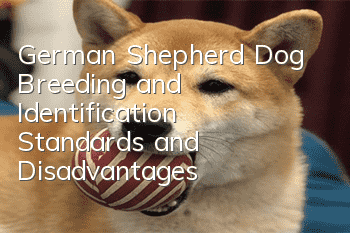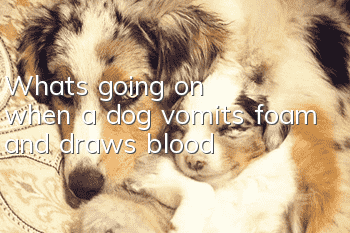German Shepherd Dog Breeding and Identification Standards and Disadvantages

Any deviation from the standard will be considered a defect in the German Shepherd Dog, and the severity of the defect can be accurately determined by grade.
Serious shortcomings: Deviations from the Shepherd Dog Breeding Standards and affecting the practicality and ornamental qualities of the Shepherd Dog are considered serious shortcomings of the Shepherd Dog. In addition, a Collie that lacks pigmentation, is overweight, is lax and sluggish, has lost or defective orientation, and has poor paw development will also be considered seriously faulty.
Ear defects: The ears are too low on both sides of the skull. The ears are soft and curled at the tips.
Eliminate shortcomings:
1. Fragile personality and excessive neurosis, as well as nervous hissing.
2. Proven to have severe hip joint disease.
3. Single howling, crying, and testicular deformity.
4. Tail and ears are deformed.
5. The dog is damaged.
6. Incomplete canine teeth.
7. The dog’s claws are incomplete.
8. 1 cm above or below the normal height standard for German Shepherd dogs.
9. Albinism.
10. If the dog’s head hair is white. (Of course, if the hair on the dog's nose and eyes is still black, it is accepted.)
11. Long-haired dog. (The hair on the head is soft, long and loose, especially the hair on the inside and outside of the ears is too long; the hair on the back of the front and rear legs is too long; the hair on the lower part of the tail is too long.
12. A long-haired dog with no epidermal hair at all, and the dog’s hair hangs down from the middle of the back to both sides of the body.
- How to cut your pet's nails
- What to do if your dog’s milk is engorged
- How to solve constipation in puppies
- What are the common methods for training dogs? Teach you how to communicate and train with your dog!
- How to Treat Ear Canal Infections in Silver Fox Dogs
- General treatments for dog poisoning
- What vaccines do dogs really need? What vaccines are necessary for your dog?
- What are the significant advantages of Corgis?
- Is your dog always sneezing? Sometimes it’s not as simple as catching a cold!
- Does cryptorchidism have a big impact on dogs?



